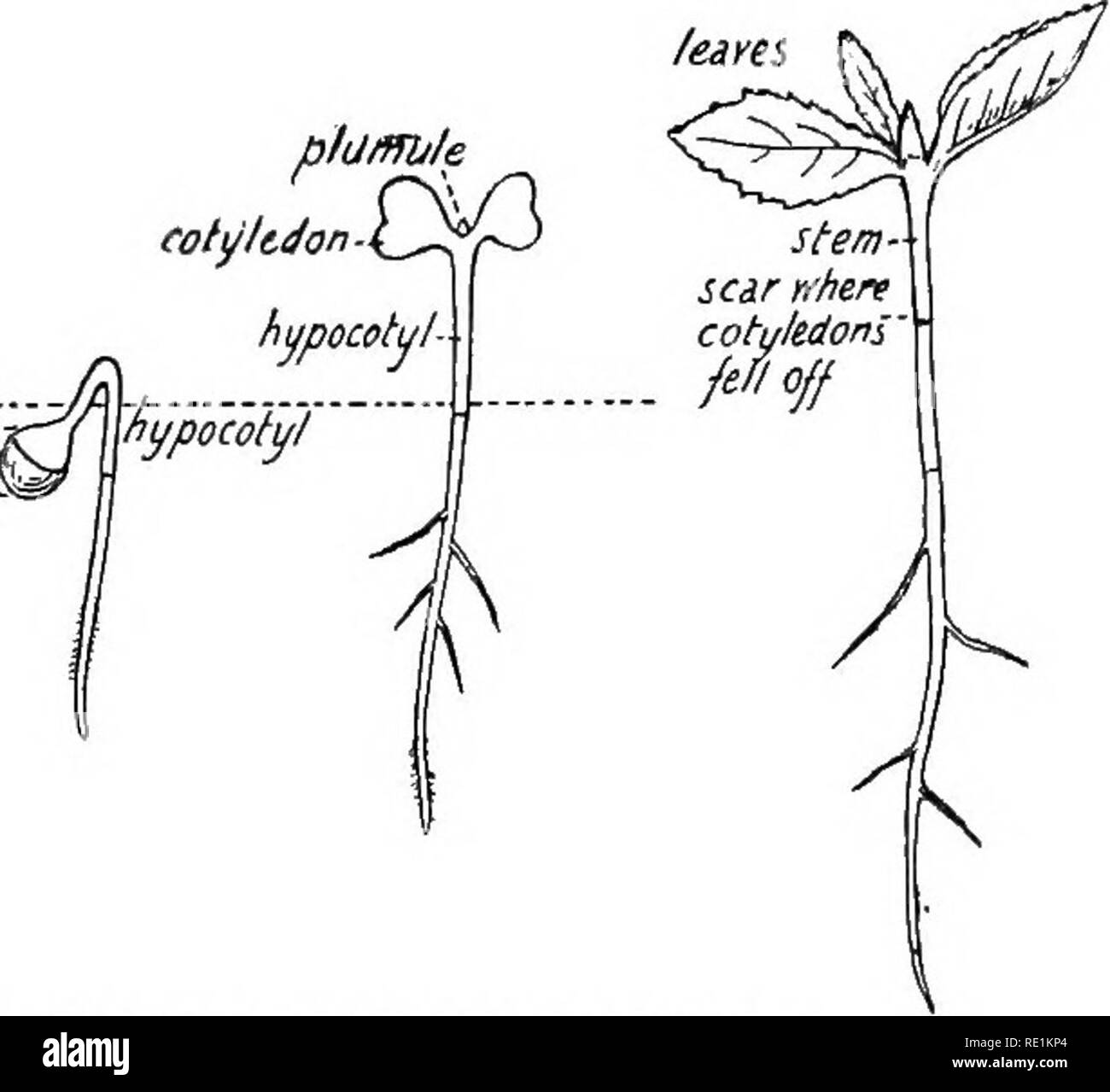. South African botany. Botany. SOUTH AFRICAN BOTANY covering being the pericarp (fig. 5). Inside this is the seed surrounded by a thin yellowish membrane, the testa. It is exendospermous, the whole seed forming the embryo. It can be readily split int,o two cotyledons, the plumule lying between them. The pointed end of the seed is a radicle. During germination the radicle elongates and then that part of the radicle immediately below the cotyledons, ph/mile O - tesU -ndick. Fig. 4.—The Germination of the Mustard Seed. known as the Hypocottl, elongates and bends to form a loop. It emerges thro

Image details
Contributor:
The Book Worm / Alamy Stock PhotoImage ID:
RE1KP4File size:
7.1 MB (149.2 KB Compressed download)Releases:
Model - no | Property - noDo I need a release?Dimensions:
1652 x 1512 px | 28 x 25.6 cm | 11 x 10.1 inches | 150dpiMore information:
This image is a public domain image, which means either that copyright has expired in the image or the copyright holder has waived their copyright. Alamy charges you a fee for access to the high resolution copy of the image.
This image could have imperfections as it’s either historical or reportage.
. South African botany. Botany. SOUTH AFRICAN BOTANY covering being the pericarp (fig. 5). Inside this is the seed surrounded by a thin yellowish membrane, the testa. It is exendospermous, the whole seed forming the embryo. It can be readily split int, o two cotyledons, the plumule lying between them. The pointed end of the seed is a radicle. During germination the radicle elongates and then that part of the radicle immediately below the cotyledons, ph/mile O - tesU -ndick. Fig. 4.—The Germination of the Mustard Seed. known as the Hypocottl, elongates and bends to form a loop. It emerges through the soil in this form and then drags the cotyledons out of the seed-case and lifts them above the ground, where they turn green and act as the first leaves. Sometimes the seed-case is carried above ground by the cotyledons, but soon drops off on their continued growth. This method of drawing the cotyledons above the soil is one often employed by dicotyledonous seeds, as obviously there is less danger to the delicate plumule than there would be by direct growth upwards.. Please note that these images are extracted from scanned page images that may have been digitally enhanced for readability - coloration and appearance of these illustrations may not perfectly resemble the original work.. Storey, Francis W; Wright, K. London, New York, Longmans, Green